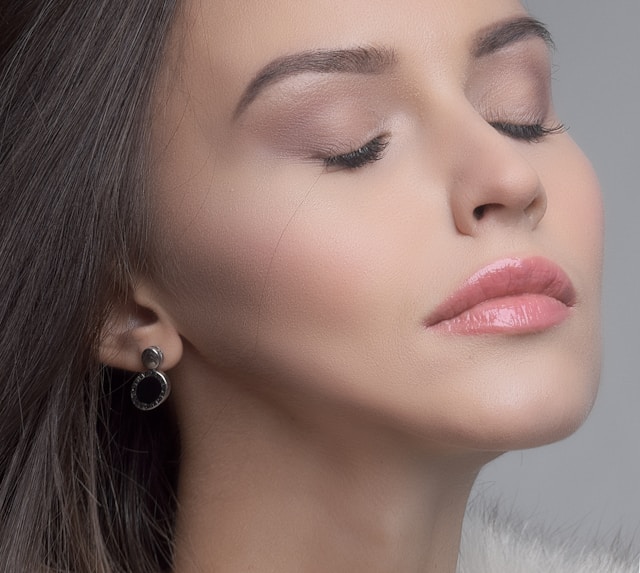
If your nose is bulbous, reddening, thickening, or growing, you may have received a diagnosis of rhinophyma. While it may be caused by rosacea, this isn’t always the case. So, what are the causes of rhinophyma, and what can you do about it? This condition is often not only physically disruptive, but it often comes with severe emotional distress, making treatment both physically and mentally necessary.
Dr. Agata Brys is a double board-certified facial plastic surgeon who has dedicated her career to helping people restore their self-confidence. In this post, we discuss the potential causes of rhinophyma and your treatment options to help you navigate this distressing condition. You are not alone, and you have options.
What Is Rhinophyma?
Rhinophyma is a skin condition characterized by a bulbous appearance of the nose due to the overactivity of the tissues on the nose, often as a result of severe rosacea. As rosacea advances or remains untreated, the nasal skin begins to thicken, resulting in redness, swelling, an irregular shape, and the development of prominent pores, as well as a bumpy appearance. Aside from the aesthetic concerns, rhinophyma can interfere with nasal airflow, making breathing difficult or uncomfortable.
While there are non-surgical options for rosacea, including laser treatments, when the condition becomes rhinophyma, corrective surgery is often necessary to regain control and confidence over your appearance.
What Causes Rhinophyma?
Rhinophyma is believed to be caused by severe or untreated rosacea, but this is not always the case. Some patients who experience rhinophyma never had rosacea, and the underlying cause is unknown. Essentially, it is the result of prolonged inflammation or overgrowth of the sebaceous glands and tissue around the nose.
Types Of Rhinophyma
Depending on the type of tissue overgrowth, you will be diagnosed with a specific type of rhinophyma. There are four types of tissue overgrowth:
- Actinic, which is the overgrowth of elastic tissue
- Fibrous, an overgrowth of connective tissue
- Glandular, an overgrowth of sebacaceous glands
- Fibroangiomatous, a buildup of connective tissue, wide blood vessels, and tissue inflammation
After a thorough consultation with your dermatologist or New Jersey facial plastic surgeon, you will be able to explore the options and treatment modalities that are best suited to the type of tissue overgrowth you are experiencing.
How Is Rhinophyma Treated?
Rhinophyma will not resolve on its own, and it will continue to worsen if you do not seek treatment. Fortunately, the condition may take years to develop, giving you time to weigh and prepare for your treatment options. When you are ready to pursue treatment, your facial plastic surgeon will often recommend a multi-treatment approach to address various aspects of the condition. Often, surgery is required, especially if you need nasal reconstruction.
Dermabrasion
In early stages of the condition, dermabrasion can effectively treat rhinophyma. Dermabrasion is a process by which your provider literally sands away overgrown and tough tissue to restore the nose’s shape and appearance.
Laser Skin Resurfacing
Amazing things can be done with lasers, including the safe removal of excess tissue. For early treatment, a pulse dye laser can be performed as a painless outpatient procedure that also treats the redness associated with rosacea.
Cryotherapy
For some patients, cryotherapy can work to freeze and destroy the unwanted excess tissue.
Surgical intervention
Rhinophyma correction surgery is a definitive treatment that removes excess tissue and reshapes the nose for patients with advanced and distressing rhinophyma. If you are experiencing functional concerns as a result of rhinophyma, you should seek out corrective surgery.
What Does Rhinophyma Correction Surgery Look Like?
Rhinophyma correction surgery is one of the most common treatments for rhinophyma, and it usually consists of multiple steps, including:
- Laser skin resurfacing
- Dermabrasion or physical extraction
- Skin grafting, if necessary
- Nasal structure reconstruction
Before your rhinophyma surgery in New Jersey, your facial plastic surgeon will explain the unique steps you can expect from your procedure. The combination of laser resurfacing and tissue reshaping provides patients with a permanent solution to restore their appearance and confidence.
Is Rhinophyma Treatment Necessary?
If you are unbothered and unaffected by your rhinophyma, you may not need treatment yet; however, it will continue to progress, and you will eventually need treatment. For patients who are experiencing emotional distress or physical side effects such as breathing impairment, treatment for rhinophyma is necessary.
Potential complications of not treating rhinophyma:
- Airway obstruction
- Recurring infection
- Emotional distress
Rhinophyma treatment in New Jersey is necessary to reclaim your life and your health. Finding a compassionate and experienced facial plastic surgeon is the best way to restore your confidence. If you do have rosacea, you will likely need to continue working to manage that condition.
You Do Have Options, And You Can Reclaim Your Appearance
It’s difficult when you have a condition that is impossible to hide, and it’s often made worse when it also impacts your health. Fortunately, a board-certified facial plastic surgeon like Dr. Agata Brys can restore your appearance and the function of your airways to give you back some control over your life and your appearance. If you want to explore your rhinophyma treatment options and take the first step toward renewed self-confidence, you can schedule a consultation with Dr. Brys online.